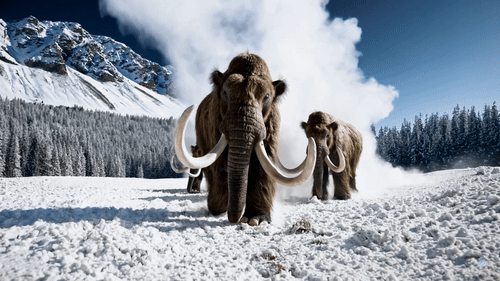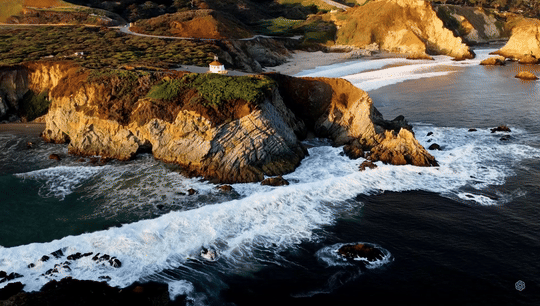Hey folks. We really try not to focus on news about the latest AI models. Despite the fact that these tools are ridiculously useful for marketers (Local Viking’s OpenAI invoice for January was just north of $3,500), the fact that our usage gets periodically slowed down by people and teams working on things like materials science, energy optimization and power grid management, and other trivialities like the protein folding problem prove this is a topic that’s (at best) marketing-adjacent.
Taking all of that into account, we have to talk about what happened with Google and OpenAI over the past 24 hours. Remember last week when we said we were about to launch a Google Gemini subscription so we could compare it to GPT-4 and share the results? Guess what. Gemini 1.0 is already obsolete. Google released Gemini 1.5 yesterday. We stayed up late reading all 58 pages of its white paper so we could explain how Gemini 1.5 isn’t just an incremental improvement over its week-old predecessor. It’s a transformative leap forward that blows every other AI model out of the water.
We’ve since decided not to bore you with a pile of data that probably won’t mean much to you because OpenAI didn’t feel like getting upstaged by Google yesterday. It announced Sora, a new AI model that means “sky” in Japanese.
What Sora means is a lot less interesting than what it does. OpenAI describes it as “our text-to-video model. Sora can generate videos up to a minute long while maintaining visual quality and adherence to the user’s prompt.” The woolly mammoths clip above this paragraph is an example of the type of video that Sora can come up with, but there are many other, more entertaining videos available to watch if you want to. Sam Altman spend a good chuck of time yesterday posting Sora output videos on his Twitter account after people @’d him prompts.
One of our favorite Sora videos (so far) is the bling zoo, but there are so many good ones. This one-minute video of a woman walking around downtown Tokyo is wild. This 20-second video of “a gorgeously rendered papercraft world of a coral reef, rife with colorful fish and sea creatures” looks like a scene out of a Pixar movie. So does this 8-second clip of a fluffy monster.
This video of waves crashing against a Big Sur coastline makes it clear that stock video businesses will need to find a way to pivot if they want to keep the lights on. The same is true for video editors whose primary source of income is YouTube– especially the ones who focus on nature and animal scenery. MKBHD has an especially well-articulated perspective on the matter.
The headline here is that AI models are progressing too quickly to keep up with. Seriously– we included a horrifying text-to-speech video of Will Smith feeding himself spaghetti in a newsletter from less than a year ago (more like ten months ago). Look how far the technology has come since then. Forget video rendering– we didn’t even have enough time to evaluate Google Gemini before it got upstaged by.. itself.
This is the part of the exponential advancement curve that feels exponential. If any of you are similarly having trouble keeping up with the latest thing, be aware of the fact that the pace of change will only accelerate from here. Ray Kurzweil looks less and less insane by the day (although we’d still firmly place him in the loony camp– he’s convinced that technology will rescue him from mortality).
Despite the fact that we haven’t tied the topics we’ve covered into Google Maps, we hope that the marketing implications of everything we’re writing about are clear. Most agencies have YouTube channels. Sora’s utility there is self-evident. Gemini 1.5 can help you write copy. Hell– Gemini can help you prospect clients and talk them into signing with you. The bad news is that Gemini can probably handle the marketing for most of those people too, but it’ll be a while before most business owners even know the right things to ask AI models to do (the same way that many non-coders can’t currently use ChatGPT to write software, even though that’s one of the things it excels at).
The big fear about democratizing the ability to spin high quality videos out of thin air is the impact that such a tool will have on misinformation, especially in a year when elections will be held in countries accounting for more than half of the world’s population (although this statistic includes contests where the outcome isn’t in doubt, like Russia [RIP Navalny]). This isn’t that, but our first closing link comes from TechCrunch. They’re analyzing the Biden campaign’s decision to make a TikTok account. We haven’t even talked about the Super Bowl yet this week, but The Atlantic ran an article on Monday about the many “shop like a billionaire” ads that Temu ran during the game. We’d also like to share a guide about launching and scaling a Facebook business page from Hootsuite. It’s incredibly useful information for your clients if not many of yourselves. Finally, there’s an ongoing Google Maps survey that we’d encourage all of you to participate in– the more marketers leaving feedback, the better.
We had to rewrite this blog post at the 11th hour because of two groundbreaking AI tools that got released yesterday. Despite the rush job, we hope everyone got something out of it. Have a wonderful weekend.



